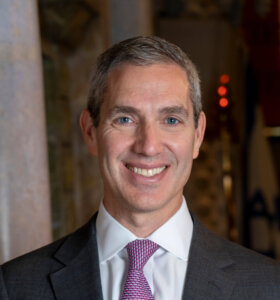‘What she lacked was the goodness of possibility:’ Parallels with Ruth in a pandemic

Image by iStockphoto

Image by iStock
“I went away full and have returned empty” (Ruth 1:21)
This Shavuot, when the Jewish people open up the book of Ruth, it will be Naomi’s cry that will resonate in our souls. There is a natural catastrophe, resulting in geographic displacement and economic insecurity. The deaths of Naomi’s husband and two sons are devastating, a derailment that threatens her connection to her people and future in her ancient Near Eastern context. Returning home to Bethlehem, bereft of everything save for her foreign-born daughter-in-law Ruth, Naomi publicly weeps before her community — her formerly full and pleasant self ( as the name Naomi means) reduced to bitter (“Mara”) emptiness. Loss and heartache abound; futures are foiled and dreams are deferred.
This year, we hear Naomi’s cry. This year, we are all Naomi.
To the biblical reader, the Hebrew words maleh (full) and reyk (empty) are evocative of far more than the presence or absence of physical things. At creation, God commands humanity to “be fertile and increase, and ‘fill’ the earth,” signalling fecundity and future productivity. Hagar “fills” her flasks of skin upon being saved by the angel and Rebecca “fills” the servant’s jugs at the well, setting the stage for her future; the daughters of Midian do the same for Moses. Conversely, the descriptor ‘empty’ represents a disconnect or break from the future. Joseph is thrown into a pit that is ‘empty,’ the sheaves of Pharaoh’s famine foreshadowing dreams are ‘empty;’ an “empty” person or word lacks the substance to endure.
Naomi’s emptiness was not merely that she lacked physical goods. What she lacked was the goodness of possibility in the emptiness of an impoverished future.
So how did Naomi regain her fullness? The redemptive arc of Ruth is not linear, but rather comes by way of individual acts of goodness, kindness and compassion, retrieved, like the barley harvest, one sheaf at a time. Ruth works hard to find empathy and restorative goodness wherever she can – and she does. Ruth seeks a field from which to glean and meets Naomi’s kinsman Boaz. He is immediately impressed with her and what he has heard of her — a testament to both Ruth’s loyalty and the charitable words spoken by the community in which she finds herself. Boaz offers Ruth both blessing and protection as she gleans from his field.
Naomi, feeling both grateful and responsible for her daughter in law, springs into action and devises a plan to find a home that will be “good” for Ruth — language suggestive of the potential and productive goodness of creation itself. She sends Ruth to Boaz, an eligible man who contains the potential for a future of fullness.
The combination of Ruth’s industriousness and Boaz’s responsiveness awakens in Naomi the possibility of a hitherto obscured future. Ruth, returning with six measures of barley for Naomi, relays that Boaz did not want her to return to her mother-in-law ‘empty-handed.’ Naomi’s helping hand has served to improve Ruth’s station — and her own.
For all his material comfort, the aging and otherwise heirless Boaz also suffers from an uncertain future. “Blessed be the Lord,” Boaz tells Ruth that fateful night on the threshing floor, “your latest deed of kindness is greater than the first in that you have not turned to younger men.” It is not just Naomi’s ancestral line that will be perpetuated by Ruth, but that of Boaz as well. Once again, kindness begets kindness, goodness generates further goodness.
And throughout it all, the community plays a positive role, publicly affirming the love shared between Ruth and Boaz — a new household for Israel and the continuation of the line of Ruth’s late husband. Upon news of Ruth’s newborn child, the women of the community step forward to proclaim: “A child is born to Naomi.” Their announcement is not about biology – the baby, of course, is issued from Ruth. Rather, it is about potential realized, a generational legacy for Naomi that will extend well beyond her lifespan.
Ruth to Naomi, Naomi to Ruth, Ruth to Boaz and the community bearing witness to it all. The power of the book (and person) of Ruth is that of one kindness leading to another to another, a virtuous cycle whereby the emptiness of each character is “filled” by way of good deeds extended to each other. Lest we forget, the very name “Ruth” derives its etymology from the same Hebrew word meaning “to fill,” most famously, as found in Psalm 23: “My cup overflows,” kosi re-va-ya. Ruth shows us that, despite our present emptiness, we can fill each other up by way of the first fruits of our own good deeds — given freely, selflessly and compassionately — to kinsmen and strangers alike.
Debbie Cosgrove is a freelance Jewish educator in Manhattan and Elliot Cosgrove is the rabbi of Park Avenue Synagogue, Manhattan. This is the first thing they have co-authored — other than their kids.






















